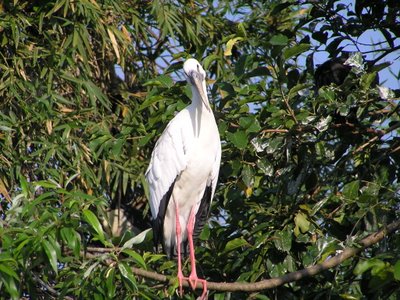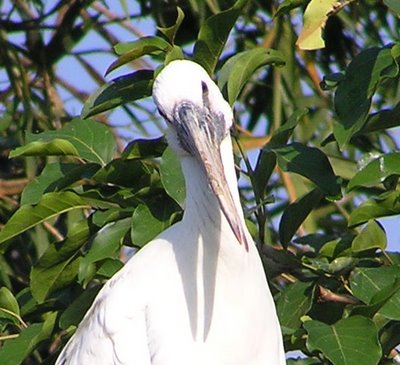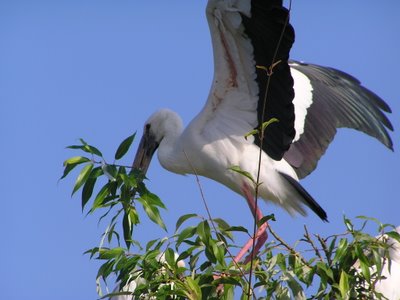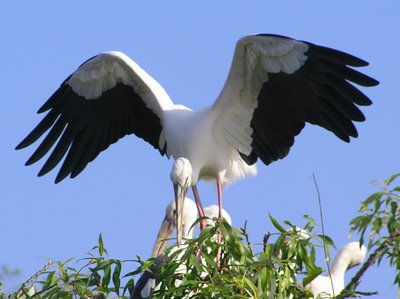Kan: Baaikallaka
Telugu: Galu konga, Pouna konga
Tamil: Naththai kuththi narai
Mal: Cherakokkan
Sinhala: Gombelle kokka
Hindi: Gungla, Ghonghila, Ghungil
Bengal: Thonte bhanga

The first set of birds that greeted us, as we took the boat ride at Ranganthittu on Dec 31st '05. Apparently, the smallest stork found in India. Sexes alike.

Observe the gap between the beaks - openbill - thats the identifying characterisitic


Around 80cm high, seen all over the Indian subcontinent (includes Pak, Bang, Lanka, & Burma). White or greyish white with black in the wings.
 Breeding season is Nov to March in south India, and July to Sep in north India. Breeds in colonies, as seen here, along with cormorants, egrets, painted storks etc.
Breeding season is Nov to March in south India, and July to Sep in north India. Breeds in colonies, as seen here, along with cormorants, egrets, painted storks etc.
 Infact, Ranganthittu has lotz of very small islands. And, one such housed all these birds. They seemed oblivious to our proximity. It was exciting, getting so close to birds & crocodiles.
Infact, Ranganthittu has lotz of very small islands. And, one such housed all these birds. They seemed oblivious to our proximity. It was exciting, getting so close to birds & crocodiles.

The blackness at the base of the beaks seems to be another characteristic.
 Why the gap between the beaks ? Salim Ali's suggests that this is an adaptation for grasping large fresh water snails. Voice apparatus doesn't exist in the stork family, hence more of the beak chattering and some moaning sounds are heard. Strong flight with neck & legs stretched - would be a lovely sight - Domestic duties shared by both sexes. Eggs: 2-4. Food regurgitated by parent into the nest and eaten franatically by the nestling.
Why the gap between the beaks ? Salim Ali's suggests that this is an adaptation for grasping large fresh water snails. Voice apparatus doesn't exist in the stork family, hence more of the beak chattering and some moaning sounds are heard. Strong flight with neck & legs stretched - would be a lovely sight - Domestic duties shared by both sexes. Eggs: 2-4. Food regurgitated by parent into the nest and eaten franatically by the nestling.Openbill Stork: Tall, white, long legs, black on wings, black at the base of the beak, and the gap between bills.
No comments:
Post a Comment